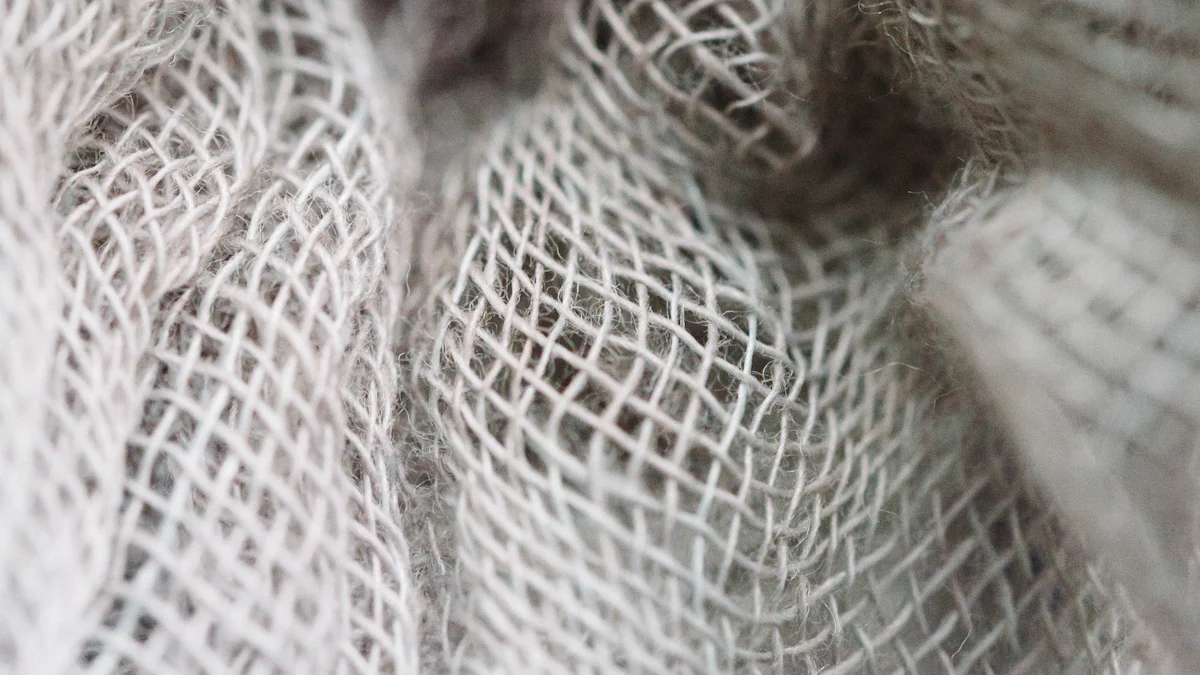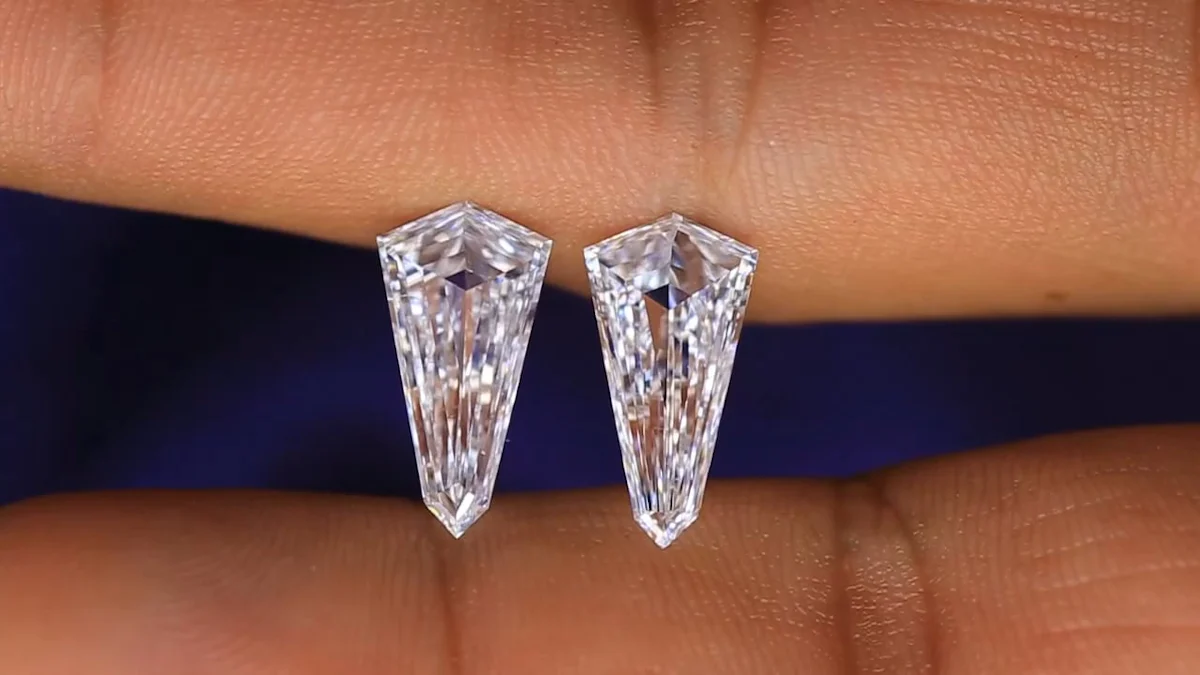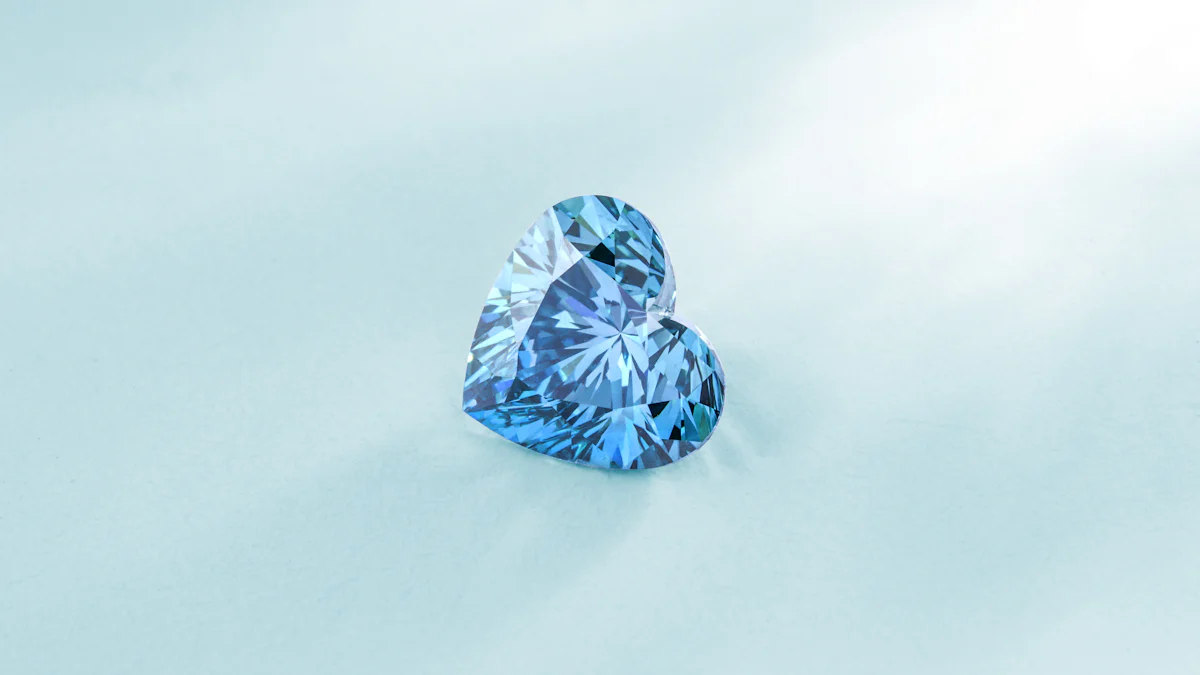Tips for Identifying High-Quality VVS Diamonds

Understanding diamond clarity VVS is essential when selecting a high-quality diamond. VVS, or Very Very Slightly Included, represents one of the highest clarity grades, ensuring near-flawless beauty. These diamonds stand out for their brilliance and rarity, making them a preferred choice for those seeking exceptional gems. Experts highlight that choosing a VVS diamond offers a balance of superior clarity and availability compared to flawless diamonds. By learning how to evaluate these stones, you can confidently invest in a dazzling piece that reflects both quality and value.
Key Takeaways
- Always check for certification from reputable gemological laboratories like GIA or AGS to ensure the diamond's quality and authenticity.
- Inspect the diamond under magnification to verify its clarity and assess its brilliance, confirming it meets your expectations.
- Consult a trusted jeweler for expert guidance and transparent information about the diamond's characteristics and certification.
- Compare prices of VVS diamonds to understand their value, considering factors like cut, carat weight, and color.
- Ensure the diamond is eye-clean, meaning it appears flawless to the naked eye, enhancing its overall beauty.
- Evaluate the diamond's setting, as a well-designed setting can enhance its brilliance and protect the stone.
- Investing in a VVS diamond offers a balance of exceptional clarity and affordability, making it a practical choice for fine jewelry.
Understanding Diamond Clarity VVS

What Does VVS Mean in Diamond Clarity?
VVS stands for Very Very Slightly Included, a term used to describe diamonds with minimal inclusions. These inclusions are so tiny that even under 10x magnification, they are challenging to detect. This clarity grade is one of the highest on the diamond clarity scale, just below Flawless (FL) and Internally Flawless (IF). VVS diamonds are divided into two subcategories: VVS1 and VVS2. VVS1 diamonds have fewer and less noticeable inclusions compared to VVS2, making them slightly superior in clarity.
The clarity of a diamond directly impacts its brilliance and overall appearance. With VVS diamonds, you get a near-flawless look that enhances the stone’s sparkle and beauty. This clarity level ensures that the diamond appears pristine to the naked eye, offering exceptional visual appeal. Understanding what VVS means helps you recognize the rarity and quality of these diamonds, making it easier to identify high-quality options.
How VVS Diamonds Compare to Other Clarity Grades
When comparing VVS diamonds to other clarity grades, their superiority becomes evident. Lower clarity grades, such as SI (Slightly Included) or I (Included), have visible inclusions that can affect the diamond’s brilliance. In contrast, VVS diamonds maintain a clean and bright appearance due to their minimal flaws. Even under magnification, the inclusions in VVS diamonds remain nearly invisible, setting them apart from lower-grade stones.
While Flawless and Internally Flawless diamonds rank higher on the clarity scale, they are significantly rarer and more expensive. VVS diamonds offer a balance between exceptional clarity and affordability. They provide a near-perfect appearance without the premium price tag of flawless diamonds. This makes VVS diamonds a popular choice for those seeking high-quality gems that deliver both beauty and value.
Why VVS Diamonds Are Highly Valued
VVS diamonds are highly valued for their rarity, brilliance, and near-flawless appearance. Their exceptional clarity enhances their sparkle, making them a standout choice for fine jewelry and engagement rings. The minimal inclusions in VVS diamonds allow light to pass through more effectively, resulting in unmatched brilliance and fire.
The rarity of VVS diamonds also contributes to their value. These diamonds represent a small percentage of all diamonds available in the market, making them a sought-after option for collectors and buyers. Additionally, VVS1 diamonds hold a higher value than VVS2 due to their superior clarity. Despite their premium pricing, VVS diamonds remain more affordable than Flawless or Internally Flawless diamonds, offering a practical yet luxurious choice.
Investing in a VVS diamond means choosing a gem that combines beauty, quality, and durability. Whether you’re purchasing an engagement ring or a statement piece, VVS diamonds provide a timeless elegance that stands the test of time.
Tips for Identifying High-Quality VVS Diamonds
Check for Certification
When buying a VVS diamond, always start by checking its certification. Reputable gemological laboratories like the Gemological Institute of America (GIA) or the American Gem Society (AGS) issue grading reports that verify the diamond’s quality. These certificates provide detailed information about the diamond’s cut, color, clarity, and carat weight. For VVS diamonds, the certification confirms the accuracy of the clarity grade, ensuring you are purchasing a genuine high-quality stone.
A certificate acts as an official guarantee of the diamond’s authenticity. Without it, you risk buying a diamond that may not meet the standards of diamond clarity VVS. Trusted online retailers, such as Blue Nile, often include these grading reports with their diamonds, making it easier for you to verify the quality before making a purchase. Always prioritize certified diamonds to ensure you are investing in a stone that matches its advertised characteristics.
Inspect the Diamond Under Magnification
To truly assess the quality of a VVS diamond, inspect it under magnification. Use a jeweler’s loupe or a microscope to examine the stone closely. Even though VVS diamonds have very few inclusions, magnification allows you to confirm their clarity grade. Inclusions in VVS diamonds are so tiny that they are nearly impossible to detect with the naked eye, but magnification ensures you can verify their minimal presence.
When inspecting the diamond, focus on its brilliance and sparkle. The clarity of a VVS diamond enhances its ability to reflect light, creating exceptional brilliance. By examining the stone under magnification, you can also evaluate other aspects of its quality, such as the precision of its cut. This step helps you make an informed decision and ensures the diamond meets your expectations.
Consult a Trusted Jeweler
A trusted jeweler plays a crucial role in helping you identify high-quality VVS diamonds. Experienced jewelers have the expertise to guide you through the selection process. They can explain the significance of diamond clarity VVS and how it impacts the overall quality of the stone. A reputable jeweler will also provide access to certified diamonds and allow you to inspect them in person.
When consulting a jeweler, ask questions about the diamond’s certification, clarity, and other characteristics. A knowledgeable jeweler will offer transparent information and help you compare different options. Visiting a jeweler also gives you the opportunity to see the diamond’s brilliance and beauty firsthand. This personal interaction ensures you feel confident in your purchase and guarantees you are selecting a high-quality VVS diamond.
Key Considerations When Purchasing VVS Diamonds

Compare Prices and Understand Value
When purchasing a VVS diamond, comparing prices helps you understand its value. VVS diamonds, known for their rarity and near-flawless clarity, often come with a premium price tag. However, not all VVS diamonds are priced equally. Factors like cut, carat weight, and color significantly influence the cost. By comparing diamonds with similar characteristics, you can identify options that offer the best value for your budget.
You should also consider how VVS diamonds compare to other clarity grades. For example, VS (Very Slightly Included) diamonds may have minor inclusions but are more affordable. Choosing a VS diamond could allow you to prioritize other factors, such as a better cut or larger carat weight. On the other hand, investing in a VVS diamond ensures a closer-to-perfect stone with unmatched brilliance. Understanding these trade-offs helps you make an informed decision that aligns with your preferences and financial goals.
Ensure the Diamond Is Eye-Clean
An eye-clean diamond appears flawless to the naked eye, even if it has minor inclusions under magnification. Most VVS diamonds are naturally eye-clean due to their high clarity grade. However, inspecting the diamond in person or through high-quality images ensures it meets your expectations. This step is crucial because even slight imperfections can affect the diamond's overall appearance.
When evaluating a VVS diamond, focus on its brilliance and sparkle. The clarity of a VVS diamond enhances its ability to reflect light, creating a dazzling effect. If the diamond looks clean and radiant without visible flaws, it qualifies as eye-clean. Ensuring this quality guarantees that your diamond will maintain its beauty and elegance in any setting.
Evaluate the Diamond’s Setting
The setting of a diamond plays a vital role in showcasing its beauty and protecting its structure. A well-designed setting enhances the brilliance of a VVS diamond while keeping it secure. When choosing a setting, consider how it complements the diamond's shape and size. For instance, prong settings allow maximum light to pass through the diamond, enhancing its sparkle. Bezel settings, on the other hand, provide more protection but may slightly reduce brilliance.
You should also evaluate the craftsmanship of the setting. High-quality settings use durable materials like platinum or gold to ensure longevity. A poorly crafted setting can detract from the diamond's beauty and increase the risk of damage. By selecting a setting that balances aesthetics and durability, you can maximize the value and appeal of your VVS diamond.
Identifying high-quality VVS diamonds requires attention to key factors that ensure value and brilliance. Certification from reputable organizations like the GIA confirms the diamond’s authenticity and clarity grade. Inspecting the diamond under magnification helps you verify its quality, while consulting a trusted jeweler provides expert guidance. By applying these tips, you can confidently select a VVS diamond that balances exceptional clarity, beauty, and value. Whether for an engagement ring or fine jewelry, your investment in a VVS diamond reflects timeless elegance and superior craftsmanship.
FAQ
What does VVS stand for?
VVS stands for Very Very Slightly Included. This term refers to diamonds with extremely small inclusions that are nearly impossible to see, even under magnification. These diamonds are highly sought after for their near-perfect clarity and exceptional brilliance.
What is the significance of VVS in diamond clarity grading?
VVS represents one of the highest clarity grades in diamonds. It indicates that the diamond has only minor inclusions, which are natural imperfections formed during its creation. These inclusions are so tiny that they do not affect the diamond's beauty or sparkle. The rarity and clarity of VVS diamonds make them a valuable choice for fine jewelry.
Why are VVS diamonds popular for jewelry?
VVS diamonds are popular because of their unmatched brilliance and clarity. Their minimal flaws allow light to pass through effortlessly, creating a dazzling sparkle. This makes them ideal for enhancing the beauty of rings, earrings, necklaces, and other fine jewelry pieces.
How can you differentiate between VVS1 and VVS2 diamonds?
VVS1 diamonds have fewer and less noticeable inclusions compared to VVS2 diamonds. While both fall under the VVS clarity grade, VVS1 diamonds are closer to perfection. This subtle difference makes VVS1 diamonds slightly more valuable and desirable.
Are VVS diamonds worth the investment?
Yes, VVS diamonds are worth the investment if you value clarity and brilliance. Their rarity and near-flawless appearance ensure long-term value. These diamonds also retain their beauty over time, making them a timeless addition to your jewelry collection.
Can you see inclusions in a VVS diamond with the naked eye?
No, inclusions in VVS diamonds are not visible to the naked eye. Even under 10x magnification, these inclusions are challenging to detect. This clarity ensures that VVS diamonds appear flawless and pristine in any setting.
Do VVS diamonds sparkle more than other clarity grades?
Yes, VVS diamonds often sparkle more than diamonds with lower clarity grades. Their minimal inclusions allow light to reflect and refract more effectively, resulting in exceptional brilliance and fire. This quality enhances their overall visual appeal.
How do VVS diamonds compare to Flawless diamonds?
Flawless diamonds have no visible inclusions or blemishes, even under magnification, making them the highest clarity grade. VVS diamonds, while not entirely flawless, come very close. They offer a similar near-perfect appearance at a more affordable price, making them a practical yet luxurious choice.
Should you prioritize clarity when buying a diamond?
Yes, clarity is an important factor when buying a diamond. A higher clarity grade, like VVS, ensures fewer imperfections, which enhances the diamond's sparkle and beauty. However, you should also consider other factors like cut, color, and carat weight to find the best balance for your preferences and budget.
Where should you buy VVS diamonds?
You should purchase VVS diamonds from reputable jewelers or certified online retailers. Look for diamonds with certification from trusted organizations like the Gemological Institute of America (GIA) or the American Gem Society (AGS). These certificates verify the diamond's quality and authenticity, ensuring you make a confident and informed purchase.
See Also
Tips for Spotting Genuine Diamond Rings Indoors
Exploring Different Diamond Cuts for Your Engagement Ring
A Comprehensive Approach to Selecting White Diamond Rings

